Raw Edges installs dye-soaked wooden floor across 19th-century sculpture gallery
Curved wooden benches and stools "grow" from a gridded floor of dyed timber installed in the sculpture gallery at English stately home Chatsworth House.
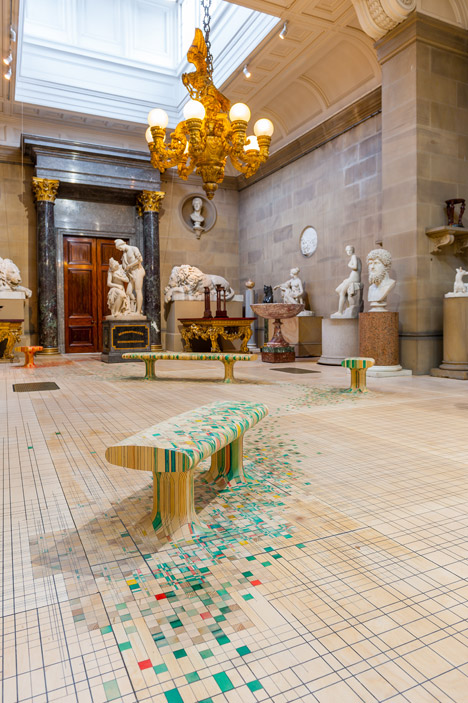
London studio Raw Edges was commissioned to created an installation inside the 19th-century sculpture gallery, as part of an exhibition of seat furniture named Make Yourself Comfortable at Chatsworth.
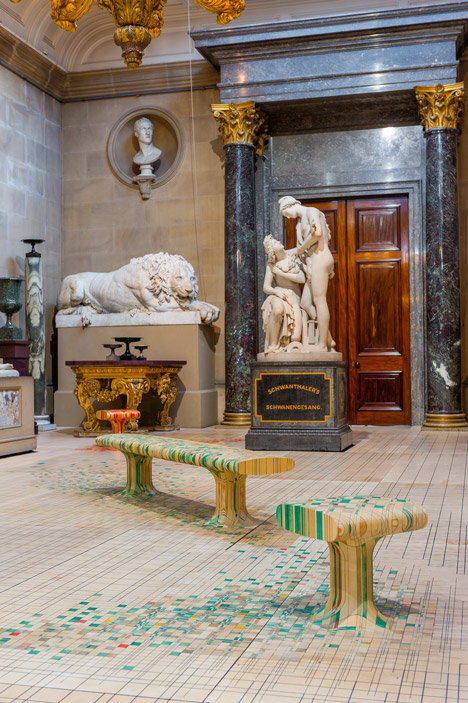
Rather than designing a single piece of furniture, studio founders Yael Mer and Shay Alkalay chose to transform the space with an installation that extends across the full room.
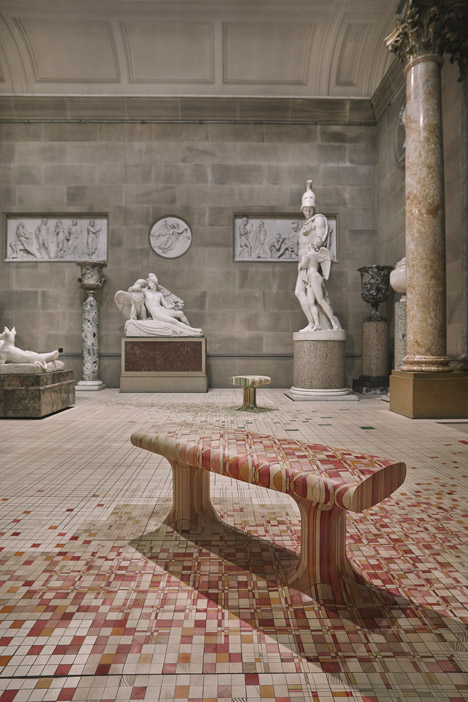
The designers used pieces of dye-soaked timber to created a patterned floor for the 300-square-metre space, with benches and stools emerging from more densely coloured areas.
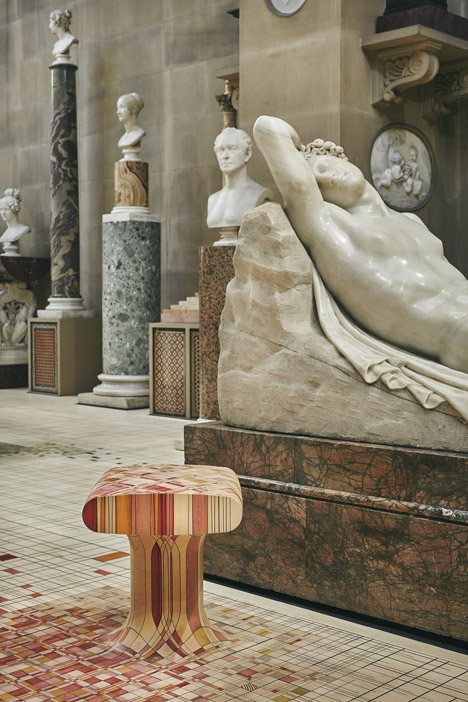
"Furniture is usually mobile, you can move it," said Alkalay. "Usually when you see a chair it has pointy legs – you don't often have an opportunity to just fix a piece of furniture to the ground. We played with the notion that it actually grows from the ground and looks almost like a tree trunk."
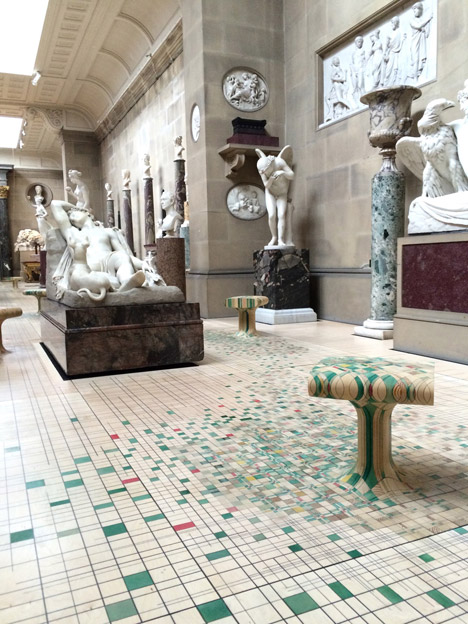
A coloured pathway winds through the space of the gallery, leading from one bench to another. Each seat is carefully positioned to allow the sitter to view particular marble sculptures.
The idea for the path evolved from an earlier plan to create a maze-like layout around the sculptures.
"The house is amazing, especially coming from the vast landscape," Alkalay told Dezeen. "So there was this discussion about turning it into a garden, almost like a French garden, you have the maze and then you see sculptures. There were a few sketches but it wasn't working very well, but there is something of a garden still – almost a path through it."
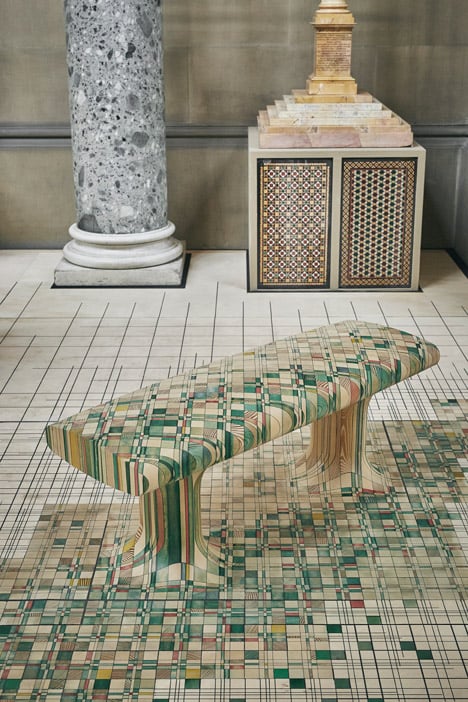
The installation is named after the Endgrain technique developed by the studio, which harnesses the grain of the wood to carry dye right the way through sections of timber. Blocks dyed in different pigments are then glued together with the grains facing vertically to create three-dimensional patterns, and then shaped with a computer numerically controlled (CNC) machine.
"We do the blocks and then it goes to CNC cutting," said the designers. "So in the beginning it is very crafty and at the end it is quite industrial."
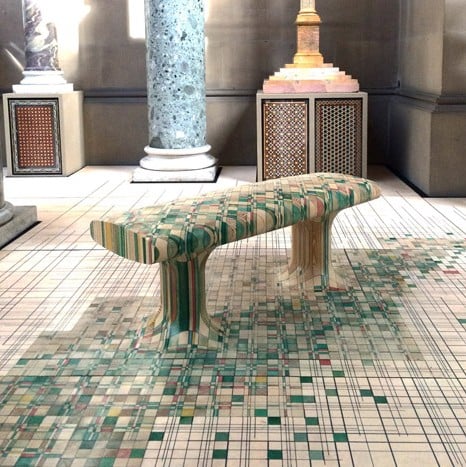
The technique was developed after Raw Edges' dyed timber floor for fashion designer Stella McCartney's Milan boutique kept losing its colour as it was worn by shoppers' feet.
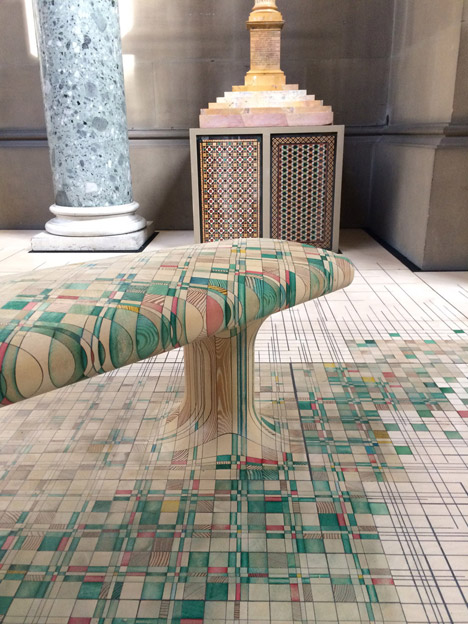
"We always had problems with the high traffic areas of the stained floor, which would fade after some time," said Akalay. "In the studio we thought 'how can we find a way to soak the stain through the wood, so even if you sand it the colour would still be there'?"
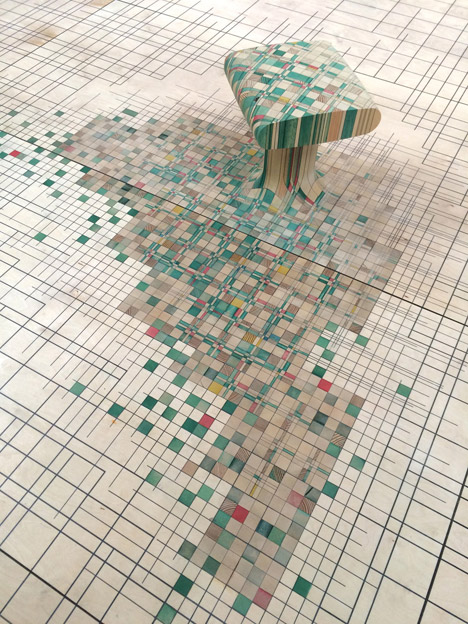
Unlike the Endgrain furniture pieces produced previously by the duo – which are formed from jelutong timber – the seats in the Chatsworth installation are made up of blocks of birch ply, with strips of black veneer sandwiched between them to create the grid pattern. The cut edges reveal angled slices through this grid, showing the varying pigments.
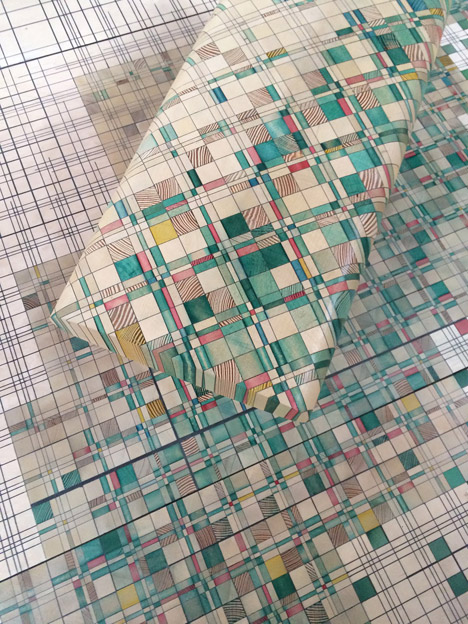
These coloured seats were placed into holes in the patterned plywood boards across the floor, carefully ensuring the grid pattern lined up. The project took a fortnight to design but three weeks to install. "[The installation] was really complicated because you can't move any of the sculptures, so they had to work around them and plan everything," Akalay told Dezeen.
The green and red pigments were chosen to relate to the mosaics that can be seen on panels on the plinths in the gallery.
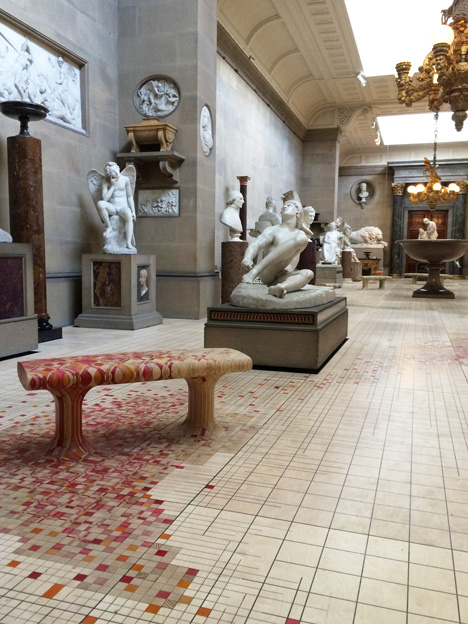
"I think what was so wonderful was that their ideas were so sympathetic to the environment but without being overawed by it, and they were influenced by some of the design details in Chatsworth too," said exhibition curator Hannah Obee.
"When this gallery was made by the sixth Duke of Devonshire in the 19th century, he actually wanted the floor to be Swedish porphyry but in the end it was too expensive even for him," said Obee. "One of the things that is wonderful is that we've come full circle. Raw Edges have introduced coloured flooring into the space which the man behind the gallery wanted originally."
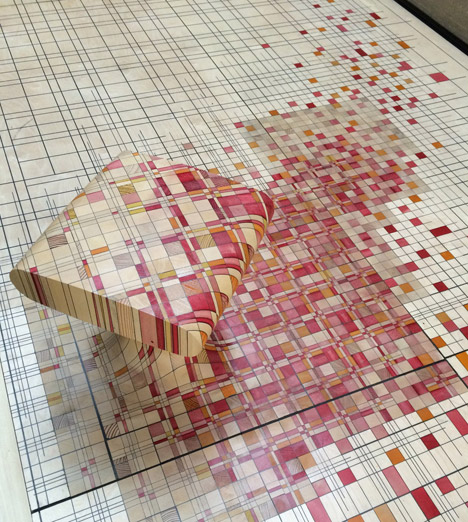
The Endgrain technique has been nominated for the Design Museum's Designs of the Year 2015, which will be awarded later this year.
Make Yourself Comfortable at Chatsworth includes another specially commissioned piece by Tom Price: a pair of blocks – one made from coal and the other from transparent resin – that occupy the Elizabethan chapel.
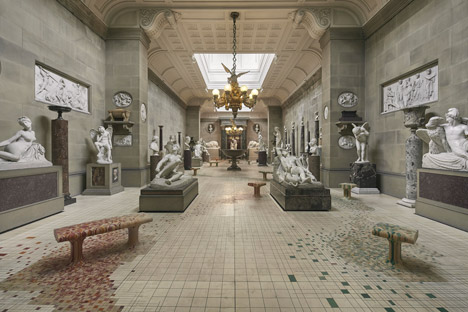
A series of contemporary chairs by designers including Marc Newson, Amanda Levete, Thomas Heatherwick and Moritz Waldemeyer are also exhibited around the house.
Make Yourself Comfortable at Chatsworth is on show until 23 October 2015.
Images courtesy of Chatsworth House Trust, unless otherwise stated.